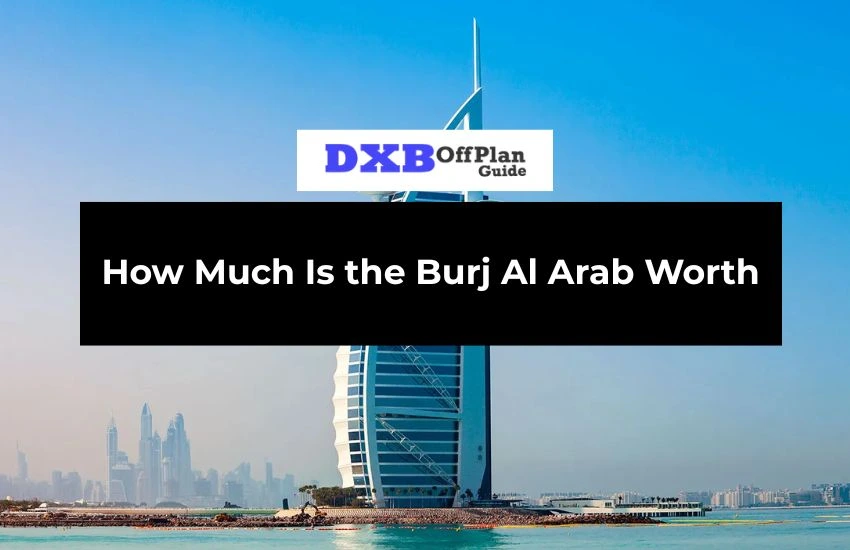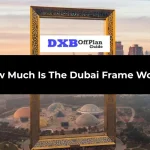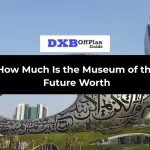The Burj Al Arab stands as more than just a seven-star hotel—it represents a multi-billion dollar question in luxury hospitality valuation. While many sources cite the $1 billion construction cost, this figure dramatically underestimates the hotel’s true economic impact and brand value. The actual worth encompasses construction expenses, brand valuation, annual revenue generation, and its role as Dubai’s ultimate luxury icon. This definitive analysis breaks down the Burj Al Arab’s value across multiple dimensions, providing a realistic assessment of what the world’s most luxurious hotel is truly worth in today’s market.

Construction Cost vs Current Valuation The Foundation of Worth
The Burj Al Arab’s construction cost represents only the starting point for understanding its true market valuation in the current luxury hospitality landscape.
-
Original Construction Budget: $1 billion (completed 1999)
-
Land Reclamation Costs: Additional $200 million for artificial island
-
2025 Replacement Cost: Estimated $2.2-2.8 billion, accounting for luxury materials inflation
-
Architectural Premium: Unique sail-shaped design adds 40-50% to standard hotel construction
The replacement cost alone positions the Burj Al Arab’s property valuation significantly higher than commonly reported figures. Construction inflation and specialized engineering requirements mean rebuilding the hotel today would require more than double the original budget.
Revenue Generation The Luxury Hospitality Engine
The Burj Al Arab functions as a premium revenue generator through multiple exclusive income streams that contribute substantially to its overall worth.
Accommodation and Suite Revenue
The hotel’s 202 duplex suites represent some of the world’s most expensive hotel accommodations, with pricing that reflects its seven-star status.
-
Suite Rates: $1,500-$24,000 per night, depending on season and suite type
-
Occupancy Rates: Maintains 70-80% occupancy despite premium pricing
-
Royal Suite: Consistently ranks among the world’s most expensive hotel suites
Dining and Experience Revenue
Nine world-class restaurants and bars, including the famous Al Muntaha and Al Mahara, generate substantial additional revenue beyond room bookings.
-
Average Restaurant Spend: $250-400 per person excluding beverages
-
Private Dining: Exclusive experiences command 100-200% premiums
-
Afternoon Tea: Iconic experience at Skyview Bar generates consistent revenue
Brand Value and Economic Impact The Intangible Worth
The Burj Al Arab’s value extends far beyond physical assets and direct revenue, creating substantial economic impact through brand association and tourism draw.
Jumeirah Group Brand Enhancement
As the flagship property of Jumeirah Group, the hotel has substantially increased the brand’s global luxury profile and market position.
-
Brand Visibility: Estimated $2-3 billion in equivalent marketing value
-
Group Positioning: Established Jumeirah as an ultra-luxury hospitality leader
-
Rate Premiums: Jumeirah properties command 20-35% rate premiums through brand association
Dubai Tourism and Economic Impact
The hotel serves as a cornerstone of Dubai’s luxury tourism strategy, driving high-net-worth visitor numbers and supporting broader economic activity.
-
Luxury Tourism Draw: 15% of Dubai’s luxury visitors cite Burj Al Arab as the primary attraction
-
Economic Multiplier: Every guest generates additional luxury spending across Dubai
-
Global Positioning: Established Dubai as an ultimate luxury destination
Comparative Global Valuation Context
Placing the Burj Al Arab’s worth in context with other global luxury hotels reveals its unique value proposition and economic performance.
-
Marina Bay Sands Singapore: $5.7 billion construction, higher room count, but lower rate premium
-
The Plaza New York: $400 million acquisition cost, similar luxury positioning
-
Hotel de Crillon Paris: $350 million renovation, comparable suite rates
-
Value Differentiation: Burj Al Arab’s brand impact and architectural uniqueness exceed comparable properties
Factors Influencing Current Valuation Market Dynamics
Several key factors determine the Burj Al Arab’s current market valuation and future worth projections in the evolving luxury hospitality market.
-
Exclusive Location Status: Artificial island positioning maintains unique appeal
-
Operating Costs: Annual operating budget estimated at $80-100 million
-
Market Conditions: Dubai luxury tourism trends directly impact valuation
-
Brand Evolution: Ongoing renovations and service enhancements preserve premium positioning
-
Competitive Landscape: New luxury hotels create competition but also cluster value
Asset Components Breakdown Tangible and Intangible Value
The Burj Al Arab’s total worth comprises multiple asset categories that collectively define its market valuation.
-
Real Estate Value: Prime beachfront artificial island location
-
Furnishings and Art: Estimated $150-200 million in luxury interiors
-
Operational Business: Going concern value based on profitability
-
Brand Equity: Global recognition and seven-star reputation
-
Intellectual Property: Architectural designs and service methodologies
Investment Perspective Long-Term Value Assessment
From an investment standpoint, the Burj Al Arab represents a unique asset class with specific value drivers in the luxury hospitality sector.
-
Revenue Stability: Maintains premium pricing through economic cycles
-
Brand Appreciation: Consistent growth in global recognition and prestige
-
Maintenance Requirements: Significant ongoing investment preserves value
-
Market Position: Unlikely to be replicated due to unique characteristics
-
Cultural Significance: Transcends hotel to become a global luxury icon
Frequently Asked Questions
Q1: What was the original construction cost of Burj Al Arab?
The Burj Al Arab’s construction cost was approximately $1 billion upon completion in 1999. This figure includes the artificial island construction but excludes substantial infrastructure investments and ongoing luxury enhancements.
Q2: How much revenue does Burj Al Arab generate annually?
While Jumeirah Group doesn’t disclose exact figures, industry analysis estimates the Burj Al Arab generates $350-500 million annually through suite rentals, dining, events, and exclusive experiences.
Q3: What would it cost to build Burj Al Arab today?
Current construction inflation and luxury material costs suggest rebuilding the Burj Al Arab today would require $2.2-2.8 billion, accounting for specialized engineering, premium materials, and updated luxury standards.
Q4: How does Burj Al Arab’s value compare to other luxury hotels?
The Burj Al Arab’s combination of architectural uniqueness, brand prestige, and revenue performance creates a valuation profile exceeding comparable global luxury hotels, with an estimated total worth 3-4 times higher than construction cost alone.
Q5: What makes Burj Al Arab worth so much compared to other hotels?
The hotel’s unique sail-shaped architecture, artificial island location, seven-star service standards, and global iconic status create a valuation premium unmatched in the luxury hospitality sector.
Q6: How has Burj Al Arab impacted Dubai’s luxury tourism market?
The Burj Al Arab has substantially enhanced Dubai’s luxury tourism profile, enabling premium pricing across the hospitality sector and establishing the emirate as a global leader in ultra-luxury travel experiences.





Leave a Reply